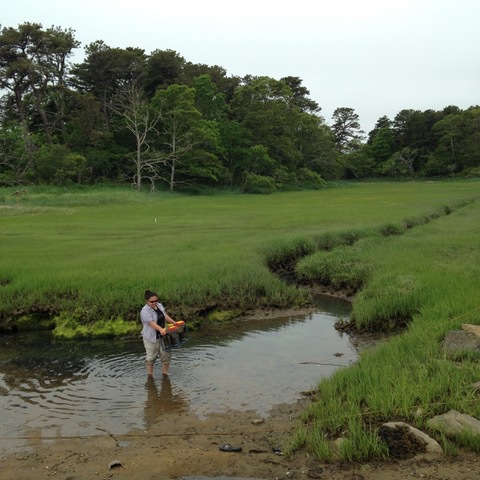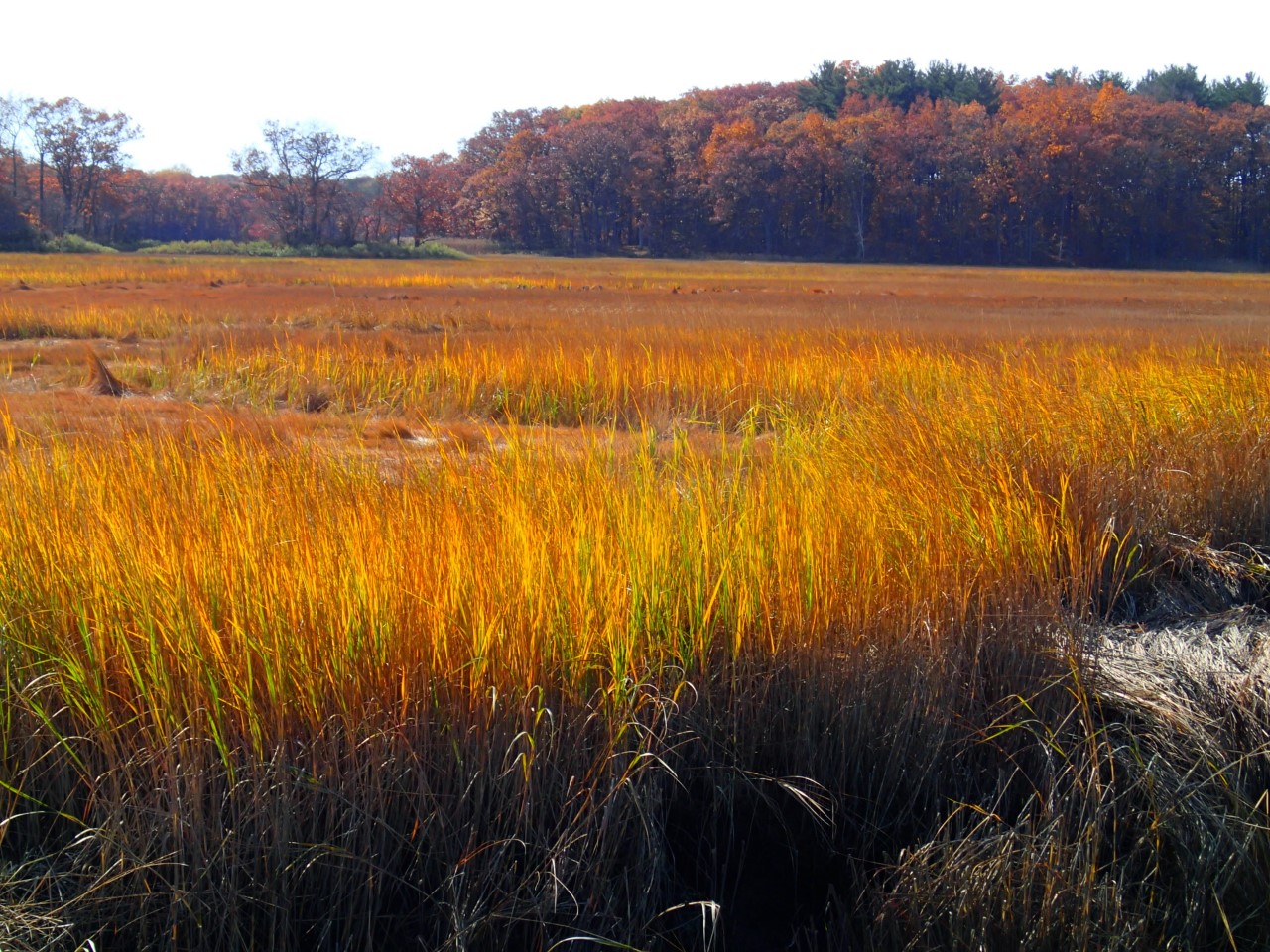Researchers in the Bowen Lab at Northeastern University’s Marine Science Center are working to expand our understanding of salt marsh resilience to the threats of sea level rise. In recent work, former PhD student Ashley Bulseco, alongside Associate Professor Jennifer Bowen and colleagues, conducted research to better understand how salt marsh environments react to nutrient enrichment and resulting implications for carbon storage in the marsh. Salt marshes are an essential “blue carbon” system, helping to mitigate climate change by trapping significant amounts of carbon. Coastal salt marshes can store more than double the carbon compared to their similar terrestrial counterparts, but it is unclear how human activities are impacting this marsh superpower. Bowen explains that as anthropogenic activities “add nutrients to our coastal waters, those nutrients can have different effects on the sustainability of salt marshes, and it depends on what type of nutrient we’re adding and what the form of nutrient that is (i.e. nitrate, vs nitrite, vs nitrogen).”

Lead author Ashley Bulseco collects samples in a Cape Cod salt marsh.
This is not the first time nutrient enrichment studies have been conducted in salt marshes. In 1971, Bowen’s graduate advisor started a salt marsh nutrient enrichment experiment in Cape Cod. Almost 50 years later, the team is still monitoring these plots, Satellite imaging illustrates that the vegetation is remarkably different in fertilized versus control plots. To build deeper understanding of the impacts of fertilization, the Bowen Lab is conducting studies that decipher the effects of different forms of nitrogen. While Bowen’s graduate advisor used nitrogen fertilizer, Bulseco and her team used nitrate specifically to enrich marsh sediment in laboratory experiments, and measured the resulting changes in metabolic activity, and genetic composition of the community of microbes living in the marsh mud.
In their recent study published in Global Change Biology, Bulseco and her colleagues set out to better understand the impact of nitrate enrichment, since nitrogen in coastal waters due to pollution and other factors presents itself primarily in the form of nitrate. There is disagreement in the field about whether nitrate is beneficial or detrimental to the marsh – increasing carbon storage capacity and disrupting marsh stability, or acting as a nutrient and stimulating production. Results of the study indicated that when nitrogen is added in the form of fertilizer, the plants take it up, grow, and thrive. However, nitrate is more available to microbes who get to it before the plants can, stimulating a shift in the microbial community and an increase of microbes responsible for decomposition.
A second publication led by Bulseco, in the journal Limnology and Oceanography, examined how nitrate addition across depths impacts microbial metabolism, and found that regardless of depth, nitrate enhances microbial respiration, with implications for the important role of carbon and nutrient cycling in the marsh.
What’s next in this research? The Bowen lab would like to take this experiment out into the field using a marsh organ, which will help the researchers monitor how interactions between nutrient enrichment and rising sea levels impact marsh carbon storage.
Given the essential ecosystem services provided by salt marshes, particularly their potential for carbon storage and natural nutrient filtration, these studies provide key information that will assist scientists and resource managers prepare for potential impacts of climate change.

